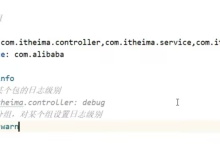引言
在高并发应用中,缓存是提升性能的关键手段。Spring Boot提供了强大的缓存抽象和集成支持,但如何合理使用缓存、避免常见陷阱,需要深入理解缓存的工作原理和最佳实践。本文将分享Spring Boot中的高级缓存策略,帮助你构建高效、可靠的缓存系统。
🔍 Spring Boot 缓存基础
🔧 1. 启用缓存支持
@SpringBootApplication@EnableCachingpublic class CacheApplication { public static void main(String[] args) { SpringApplication.run(CacheApplication.class, args); }}
📌 2. 核心缓存注解
- @Cacheable:标记方法结果可缓存
- @CacheEvict:清除缓存
- @CachePut:更新缓存而不影响方法执行
- @Caching:组合多个缓存操作
- @CacheConfig:类级别缓存配置
💻 3. 简单缓存配置示例
@Service@CacheConfig(cacheNames = "users")public class UserService { @Autowired private UserRepository userRepository; @Cacheable(key = "#id") public User getUserById(Long id) { // 模拟慢查询 try { Thread.sleep(2000); } catch (InterruptedException e) {} return userRepository.findById(id).orElse(null); } @CacheEvict(key = "#id") public void deleteUser(Long id) { userRepository.deleteById(id); } @CachePut(key = "#user.id") public User updateUser(User user) { return userRepository.save(user); }}
⚡ 高级缓存策略
🔄 1. 多级缓存实现
结合本地缓存和分布式缓存,兼顾性能和一致性。
📦 添加依赖
<dependency> <groupId>org.springframework.boot</groupId> <artifactId>spring-boot-starter-cache</artifactId></dependency><dependency> <groupId>org.springframework.boot</groupId> <artifactId>spring-boot-starter-data-redis</artifactId></dependency>
⚙️ 多级缓存配置
@Configurationpublic class MultiLevelCacheConfig { // 本地缓存配置 @Bean public CaffeineCacheManager caffeineCacheManager() { CaffeineCacheManager cacheManager = new CaffeineCacheManager(); cacheManager.setCaffeine(Caffeine.newBuilder() .expireAfterWrite(10, TimeUnit.MINUTES) .maximumSize(1000)); return cacheManager; } // Redis缓存配置 @Bean public RedisCacheManager redisCacheManager(RedisConnectionFactory connectionFactory) { RedisCacheConfiguration config = RedisCacheConfiguration.defaultCacheConfig() .entryTtl(Duration.ofMinutes(30)) .disableCachingNullValues(); return RedisCacheManager.builder(connectionFactory) .cacheDefaults(config) .withCacheConfiguration("users", RedisCacheConfiguration.defaultCacheConfig().entryTtl(Duration.ofHours(1))) .build(); } // 多级缓存管理器 @Bean public CacheManager multiLevelCacheManager(CaffeineCacheManager caffeineCacheManager, RedisCacheManager redisCacheManager) { CompositeCacheManager cacheManager = new CompositeCacheManager(caffeineCacheManager, redisCacheManager); cacheManager.setFallbackToNoOpCache(false); return cacheManager; }}
🛡️ 2. 缓存穿透防护
缓存穿透是指查询不存在的数据,导致请求直接落到数据库上。
💡 解决方案1:缓存空值
@Cacheable(key = "#id", cacheNames = "users", unless = "#result == null")public User getUserById(Long id) { return userRepository.findById(id).orElse(null);}// 改进版:缓存空值@Cacheable(key = "#id", cacheNames = "users")public User getUserByIdWithNullCache(Long id) { User user = userRepository.findById(id).orElse(null); // 缓存空值,避免缓存穿透 return user != null ? user : new User(); // 返回空对象而不是null}
🔍 解决方案2:布隆过滤器
@Configurationpublic class BloomFilterConfig { @Bean public BloomFilter<Long> userIdBloomFilter() { // 预计元素数量、误判率 BloomFilter<Long> filter = BloomFilter.create(Funnels.longFunnel(), 100000, 0.01); // 预热布隆过滤器 List<Long> userIds = userRepository.findAllIds(); userIds.forEach(filter::put); return filter; }}@Servicepublic class UserService { @Autowired private BloomFilter<Long> userIdBloomFilter; @Cacheable(key = "#id") public User getUserByIdWithBloomFilter(Long id) { // 先检查布隆过滤器 if (!userIdBloomFilter.mightContain(id)) { return null; // 快速返回,避免数据库查询 } return userRepository.findById(id).orElse(null); }}
🔥 3. 缓存预热
在应用启动时预先加载热点数据到缓存。
@Component@Slf4jpublic class CacheWarmer implements CommandLineRunner { @Autowired private UserService userService; @Autowired private CacheManager cacheManager; @Override public void run(String… args) { log.info("开始缓存预热…"); // 加载热点用户数据 List<Long> hotUserIds = Arrays.asList(1L, 2L, 3L, 4L, 5L); hotUserIds.forEach(userId -> { userService.getUserById(userId); log.info("预热用户数据: {}", userId); }); log.info("缓存预热完成"); }}
⏱️ 4. 缓存过期与刷新策略
🔄 定时刷新缓存
@Scheduled(fixedRate = 3600000) // 每小时执行一次public void refreshHotUserData() { log.info("开始刷新热点用户数据…"); List<Long> hotUserIds = userRepository.findHotUserIds(); hotUserIds.forEach(userId -> { // 主动刷新缓存 User user = userRepository.findById(userId).orElse(null); if (user != null) { cacheManager.getCache("users").put(userId, user); } }); log.info("热点用户数据刷新完成");}
🕒 滑动窗口过期策略
@Beanpublic CaffeineCacheManager caffeineCacheManager() { CaffeineCacheManager cacheManager = new CaffeineCacheManager(); cacheManager.setCaffeine(Caffeine.newBuilder() .expireAfterAccess(10, TimeUnit.MINUTES) // 最后一次访问后过期 .maximumSize(1000)); return cacheManager;}
🛒 实战案例:电商商品详情页缓存
📋 1. 场景描述
电商商品详情页需要频繁访问,且数据更新不频繁,适合使用缓存优化。
💻 2. 实现方案
@Service@CacheConfig(cacheNames = "products")public class ProductService { @Autowired private ProductRepository productRepository; @Autowired private RedisTemplate<String, Object> redisTemplate; // 商品详情页缓存,设置1小时过期 @Cacheable(key = "#id", cacheNames = "productDetails") public ProductDetailDTO getProductDetail(Long id) { // 模拟复杂查询 Product product = productRepository.findById(id).orElse(null); if (product == null) { return null; } // 获取商品图片、属性、评价等信息 List<String> images = productRepository.findProductImages(id); List<ProductAttribute> attributes = productRepository.findProductAttributes(id); Double avgRating = productRepository.calculateAverageRating(id); // 组装DTO ProductDetailDTO dto = new ProductDetailDTO(); dto.setProduct(product); dto.setImages(images); dto.setAttributes(attributes); dto.setAvgRating(avgRating); return dto; } // 商品库存缓存,设置5分钟过期 @Cacheable(key = "#id", cacheNames = "productStock") public Integer getProductStock(Long id) { return productRepository.getStockById(id); } // 更新商品库存时清除缓存 @CacheEvict(key = "#id", cacheNames = "productStock") public void updateProductStock(Long id, Integer stock) { productRepository.updateStock(id, stock); } // 定时刷新商品库存缓存 @Scheduled(fixedRate = 300000) // 每5分钟执行一次 public void refreshProductStockCache() { List<Long> hotProductIds = productRepository.findHotProductIds(); hotProductIds.forEach(id -> { Integer stock = productRepository.getStockById(id); redisTemplate.opsForValue().set("productStock::" + id, stock, 5, TimeUnit.MINUTES); }); }}
🔑 3.实现方案缓存键设计
@Configurationpublic class CacheKeyGeneratorConfig { @Bean public KeyGenerator productKeyGenerator() { return (target, method, params) -> { StringBuilder sb = new StringBuilder(); sb.append(target.getClass().getName()).append(":"); sb.append(method.getName()).append(":"); for (Object param : params) { sb.append(param.toString()).append(":"); } // 添加版本号,便于缓存整体失效 sb.append("v1"); return sb.toString(); }; }}
📝 最佳实践与注意事项
缓存键设计:
-
包含足够的信息以唯一标识缓存项
-
避免使用复杂对象作为键,推荐使用简单类型
-
考虑添加版本号,便于缓存整体失效
缓存粒度:
-
避免缓存过大的对象,拆分为更小的粒度
-
根据访问频率和更新频率调整缓存策略
缓存一致性:
-
确保数据更新时缓存也随之更新或清除
-
对于强一致性要求,考虑使用分布式锁或事务
缓存监控:
-
监控缓存命中率、缓存大小等指标
-
使用Spring Boot Actuator暴露缓存指标
management: endpoints: web: exposure: include: cache,health,info
-
避免缓存异常影响主业务流程
-
实现缓存回退机制
@Cacheable(key = "#id", unless = "#result == null", errorHandler = "cacheErrorHandler")public User getUserById(Long id) { // 业务逻辑}@Beanpublic CacheErrorHandler cacheErrorHandler() { return new CacheErrorHandler() { @Override public void handleCacheGetError(RuntimeException exception, Cache cache, Object key) { log.error("缓存获取错误: {}", exception.getMessage()); // 继续抛出异常或返回默认值 } // 其他错误处理方法… };}
-
为不同缓存项设置随机过期时间
-
使用多级缓存架构
-
实现缓存预热和快速失败机制
📚 总结
缓存是提升Spring Boot应用性能的有效手段,但需要合理设计和使用。本文介绍了Spring Boot中的高级缓存策略,包括多级缓存、缓存穿透防护、缓存预热、过期策略等,并通过实战案例展示了如何应用这些策略。通过这些最佳实践,你可以构建更高效、更可靠的缓存系统,提升应用性能和用户体验。
希望本文对你理解和优化Spring Boot缓存有所帮助。如果你有任何问题或建议,欢迎在评论区留言讨论!
📖 参考资料
-
Spring 官方文档
https://docs.spring.io/spring-boot/reference/io/caching.html#io.caching
-
Spring Boot 官方文档
https://docs.spring.io/spring-boot/docs/current/reference/html/features.html
-
Caffeine 缓存文档
https://github.com/ben-manes/caffeine
-
Redis 官方文档
https://redis.io/documentation
-
Guava 布隆过滤器文档
https://guava.dev/releases/snapshot-jre/api/docs/com/google/common/hash/BloomFilter.html
 网硕互联帮助中心
网硕互联帮助中心






评论前必须登录!
注册